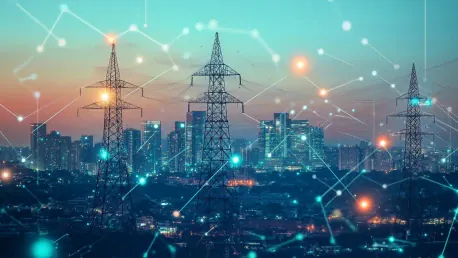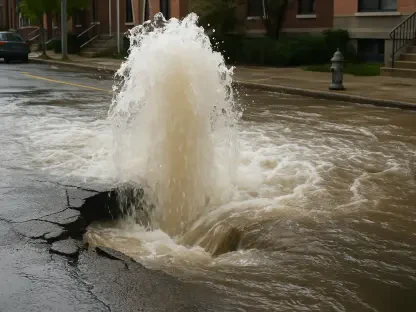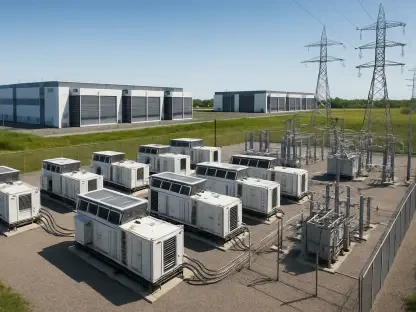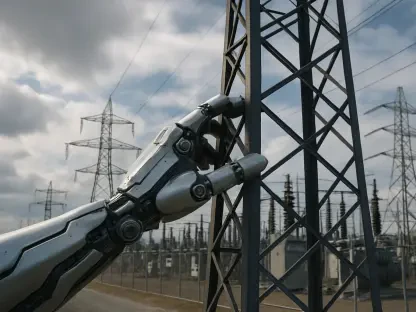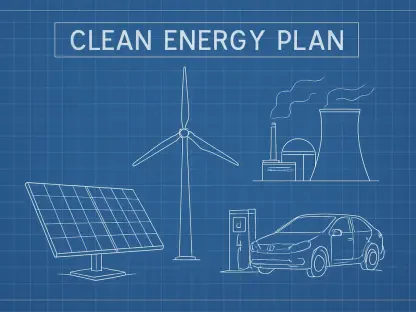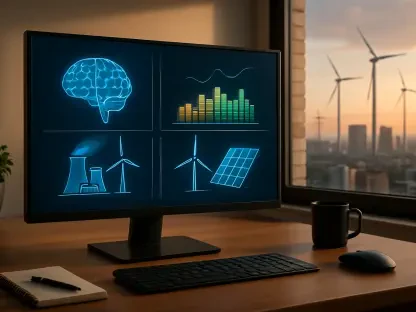The move towards renewable energy sources has become a critical element in modernizing the electrical grid. By replacing aging infrastructure and incorporating cutting-edge technology, renewable energy promises to meet the increasing global demand for sustainable and efficient power. This article explores the transformative role of renewables in driving grid modernization. Electric grids worldwide are increasingly strained under the weight of growing demand and evolving energy consumption patterns; hence, a fundamental change is imperative. Governments, utility companies, and technology firms are collaborating to leverage renewable energy sources as the cornerstone for future energy strategies.
The Historical Context of Renewable Energy
Renewable energy sources have ancient origins, with windmills and waterwheels used for centuries to harness natural forces. During the Industrial Revolution, reliance on steam engines and coal diminished the use of these early renewables. However, the oil crises of the late 20th century reignited interest in cleaner energy sources. This renewed focus paved the way for the development of modern solar, wind, and hydropower technologies that are currently reshaping the power landscape. Historically, the transition to renewables has been driven by the need to address environmental concerns, reduce dependency on fossil fuels, and enhance energy security. Today, renewables are not just an alternative; they are the cornerstone of future energy strategies.
The journey from ancient windmills and waterwheels to today’s sophisticated renewable technologies underscores a significant shift in humankind’s relationship with natural energy. Initially, the convenience and energy density of fossil fuels eclipsed the potential of renewable sources. However, environmental degradation and geopolitical instabilities associated with fossil fuels prompted a renewed focus on sustainable energy. Modern renewable technologies have benefited from historical lessons, applying advanced engineering principles and innovative materials to maximize efficiency and reduce costs. This historical context highlights the cyclical nature of renewable energy’s prominence and establishes a foundation for understanding its contemporary significance.
Significant Growth in Renewable Energy
The 21st century marks a significant increase in the adoption of renewable energy. Technological advancements and decreasing costs have made solar and wind energy more accessible. Forecasts suggest that these two sources will account for 95% of global renewable expansion, with a strong possibility of surpassing coal as the main power source by 2025. Such a shift is critical for reducing global carbon emissions and mitigating climate change impacts. Governments and institutions worldwide are implementing policies and incentives to support renewable energy projects. This has led to large-scale solar farms, wind parks, and innovative technologies for biomass and geothermal energy. The ongoing expansion reflects a strategic move towards diverse and resilient energy systems.
The surge in renewable energy adoption is a testament to the technological advancements and cost reductions achieved over the past two decades. Solar panel efficiencies have dramatically improved, and wind turbines have become more reliable and efficient. The investment landscape has shifted, with renewable energy projects attracting significant funding from both public and private sectors. This influx of capital has spurred innovation in energy storage, grid management, and generation technologies. Consequently, renewables are not only supplementing but increasingly replacing traditional energy sources. This paradigm shift is facilitating the creation of a more interconnected, intelligent, and adaptable energy grid designed to meet 21st-century challenges.
Types of Renewable Energy
Solar Power
Solar power uses photovoltaic panels to transform sunlight into electricity. Homes and businesses are increasingly installing solar panels to cut down on energy bills and reduce their carbon footprints. Large-scale solar farms contribute significantly to grid capacity, offering a sustainable alternative to traditional power plants. Advances in photovoltaic technology have increased the efficiency and lifespan of solar panels, making them more viable for long-term investments. The versatility of solar power allows it to be deployed in a variety of settings, from rooftop installations in urban areas to expansive solar farms in deserts and other sun-rich environments.
Solar power can be integrated into existing infrastructure with relative ease, thus streamlining the transition to renewable energy. Innovations such as bifacial solar panels, which can capture sunlight on both sides, and solar tracking systems, which adjust the angle of panels to maximize exposure, are further enhancing the output and efficiency of solar installations. Solar power’s ability to scale, combined with decreasing costs and governmental incentives, cements its role as a pivotal element in grid modernization. It also exemplifies how technology and strategic policy can converge to drive significant advancements in renewable energy adoption.
Wind Power
Wind power is harnessed through turbines that convert wind energy into electricity. It is suitable for large open plains as well as offshore installations, providing a reliable source of renewable power. Advances in turbine technology have increased efficiency and reduced costs, making wind an essential component of the renewable energy mix. Offshore wind farms, in particular, have gained traction due to their higher and more consistent wind speeds compared to onshore sites. These offshore installations can generate significant amounts of electricity, contributing substantially to the grid’s capacity.
The reliability of wind power is bolstered by comprehensive wind forecasting techniques, which enable better planning and integration into the grid. Technological improvements such as larger rotor diameters and taller towers have also enhanced the energy capture potential of wind turbines. As the technology matures, issues related to noise and visual impact are being addressed through innovative designs and strategic siting. Wind power’s scalability and declining cost trajectory position it as a cornerstone of future energy systems, offering a significant reduction in greenhouse gas emissions and bolstering grid reliability through diversified energy sources.
Hydropower
Hydropower remains a major renewable energy source, utilizing the energy from flowing water through dams. It provides a stable and reliable power supply, given the right geographic conditions. Modern hydropower plants incorporate ecological considerations, minimizing impacts on surrounding environments. Historically, hydropower has been a cornerstone of renewable energy generation, with legacy projects providing long-term returns on investment. The predictability and controllability of water flow make hydropower a particularly valuable resource for balancing the grid, especially in conjunction with more intermittent renewable sources like solar and wind.
Despite its stability, the full exploitation of hydropower is often constrained by geographical and environmental factors. New developments in small-scale hydro technologies, which can be deployed in smaller rivers and streams with minimal ecological disruption, are expanding the potential for hydropower generation. Innovative fish bypass systems and sediment management techniques are also mitigating some of the ecological downsides of traditional large-scale dams. By balancing ecological integrity with energy needs, hydropower continues to play a crucial role in the renewable energy landscape, complementing other sources to achieve a diversified and resilient energy grid.
Bioenergy and Geothermal
Bioenergy converts organic materials like wood, agricultural waste, and algae into fuels. Currently, it stands as the largest renewable energy source, serving diverse applications from electricity production to heating. Bioenergy’s versatility allows it to replace fossil fuels directly, making it a particularly useful transitional technology. Advances in bioenergy technologies, such as more efficient combustion methods and enhanced biofuel production processes, are increasing the viability and sustainability of this energy source.
Geothermal energy taps into the Earth’s internal heat, increasingly used in residential heating and cooling systems. Unlike intermittent sources such as wind and solar, geothermal energy provides a constant supply of power, making it a highly reliable component of the energy mix. Enhanced geothermal systems, which create man-made geothermal reservoirs, are expanding the potential for geothermal energy to be used in regions without natural geothermal activity. These technological advancements enable deeper drilling and more efficient heat extraction, broadening the applicability and sustainability of geothermal energy.
Tidal and Wave Power
While still emerging, tidal and wave energy harness oceanic movements to generate electricity. These technologies hold promise for regions with significant tidal ranges and wave activity. Continued research and development aim to make tidal and wave power viable for broader implementation. The predictability of tides, driven by lunar cycles, provides a consistent and reliable energy source that can be integrated into the grid with minimal disruption.
Wave power technologies are developing to harness the kinetic energy of oceanic waves through various innovative designs. As research progresses, the efficiency and cost-effectiveness of these systems are expected to improve, making them more competitive with other forms of renewable energy. The unique benefits of tidal and wave power, such as their ability to provide consistent energy output and their minimal visual impact, make them vital components of a diversified renewable energy portfolio. The successful deployment of these technologies could unlock new opportunities for coastal and island communities, bolstering grid resilience and promoting energy independence.
Benefits of Renewables for Grid Modernization
One of the prime benefits of integrating renewables into the grid is enhanced reliability. Distributed generation from renewable sources reduces dependency on centralized fossil fuel power plants. This decentralization helps mitigate the risk of widespread outages and ensures a more resilient energy system. The geographic dispersion of renewable energy installations also contributes to enhanced grid flexibility and response capabilities, enabling a more adaptable and robust energy infrastructure.
Renewable energy sources produce minimal greenhouse gas emissions. They contribute to improved air quality and reduced environmental degradation. By adopting renewables, countries can make significant strides toward meeting international climate targets and sustaining ecological balance. The environmental benefits extend beyond emissions reductions to include improved public health outcomes and reduced strain on natural resources. Transitioning to renewable energy sources helps mitigate the adverse effects of climate change, fostering greater environmental sustainability.
Investing in renewable energy infrastructure stimulates economic growth. New sectors emerge, creating job opportunities and driving regional development. As the renewable energy market expands, advancements in technology and economies of scale will continue to lower costs and increase efficiency. The economic ripple effects of renewable energy investments extend to ancillary industries, such as manufacturing, installation, maintenance, and grid management. These investments create a virtuous cycle of innovation and economic activity, promoting a more sustainable and equitable economy.
Challenges Facing Renewable Integration
While renewable energy offers long-term benefits, the initial setup costs can be substantial. Financing the infrastructure required for large-scale renewable projects remains a significant barrier. Strategic investments and supportive policy frameworks are essential to overcome these financial challenges. Governments and financial institutions play a critical role in lowering the barriers to entry through grants, subsidies, and other financial mechanisms. Collaborative public-private partnerships are also pivotal in mobilizing the necessary resources for large-scale renewable deployment.
Renewables like solar and wind are intermittent, generating power only when the sun shines or the wind blows. Effective energy storage solutions are crucial to balance supply and demand. Technologies such as batteries, pumped hydro storage, and other innovative storage systems are being developed to address this challenge. Advances in battery technology, particularly in energy density and cost reduction, are making storage solutions more viable and scalable. Integrating these storage solutions with renewable energy sources enhances grid stability and ensures a consistent power supply.
Intermittency remains a critical issue with renewable sources. Without adequate storage solutions or backup generation, integrating these sources into the grid can be challenging. Advanced forecasting and grid management technologies are essential to mitigate the impacts of variable renewable generation on grid stability. Developing predictive models and real-time monitoring systems enables more effective integration and management of renewable energy sources. These technological advancements help allocate resources more efficiently, reducing the impact of intermittency on grid operations.
The effectiveness of renewable energy sources often depends on specific geographic and climatic conditions. Not every region can exploit all types of renewables equally. Tailored approaches and diversified portfolios are necessary to ensure that renewable energy solutions meet the unique needs and potential of different areas. Geographic information systems (GIS) and other analytical tools are being employed to identify optimal locations for renewable installations. This data-driven approach facilitates more strategic deployment, maximizing the benefits of renewable energy and minimizing potential downsides.
Conclusion
The shift towards renewable energy sources has become essential in updating the electrical grid. With the aim of replacing outdated infrastructure and incorporating advanced technology, renewable energy is set to address the rising global need for sustainable and efficient power. This article examines the pivotal role renewables play in driving grid modernization. Electrical grids around the world are increasingly strained due to growing demand and changing energy consumption patterns, making fundamental changes a necessity.
The importance of this transition cannot be overstated. Conventional energy sources, primarily fossil fuels, contribute significantly to environmental degradation. Renewables like solar, wind, and hydropower offer cleaner alternatives, reducing the grid’s carbon footprint while also enhancing energy security. These energy sources aren’t just environmentally friendly; they also prove to be cost-effective in the long term.
Governments, utility companies, and technology firms are joining forces to make renewable energy the cornerstone of future energy strategies. Such collaboration is crucial for overcoming significant challenges, like energy storage and grid integration, which are vital for the widespread adoption of renewables. By investing in renewable energy, these stakeholders hope to build a resilient, efficient, and sustainable energy grid that can meet future demands and promote a cleaner environment for generations to come.
